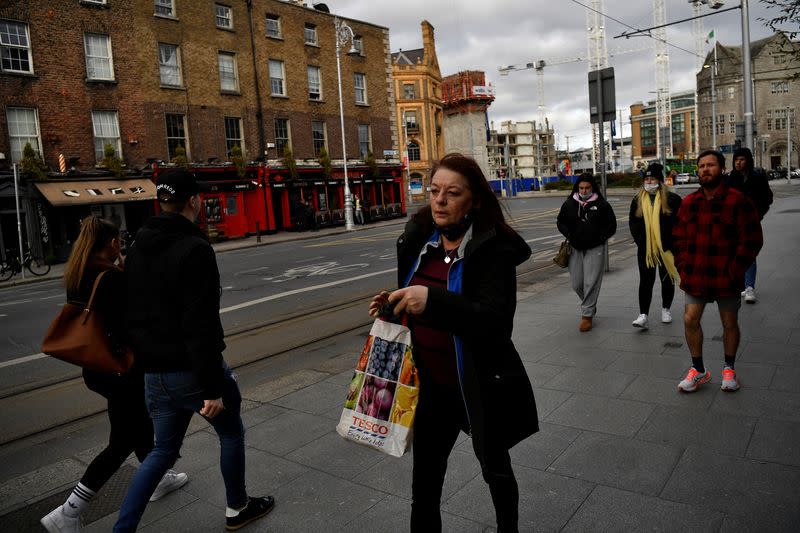Irish domestic economy shrank 1% in Q1 as inflation starts to bite
By Padraic Halpin
DUBLIN (Reuters) -Ireland's domestic economy contracted 1% quarter-on-quarter in the first three months of the year on drops in consumption, government spending and investment and the first signs that rising inflation was starting to bite, data showed on Friday.
Gross domestic product (GDP), a broader measure of economic activity, grew by 10.8% on the quarter. The government has long cautioned against using this measure due to the ways Ireland's large multinational sector can distort it.
Officials instead use modified domestic demand (MDD), which strips out some of those distorting factors. That was 11% higher than the same period in 2021 when the economy was in strict lockdown.
The Central Statistics Office (CSO) said growth of 14.1% in multinational dominated sectors drove virtually all of the jump in GDP, which followed a quarterly fall of 6.2% in the often fluctuating series during the final three months of 2021.
Lower car sales helped drag personal spending on goods and services down 0.7%, and government spending fell 0.4% as fewer public funds were needed to support the economy as it quickly emerged from a COVID-19 lockdown at the end of January.
While nominal consumer spending is now 6% above pre-pandemic levels, Goodbody Stockbrokers Chief Economist Dermot O'Leary said real consumer spending remained 2% lower as a result of inflation that has since hit a near 40-year high of 8.2%.
O'Leary said MDD will grow by around 3% for the year as a whole even if consumer spending remains flat over the next three quarters and that, while he himself expected a better performance than that, Goodbody's current forecast of 6% growth looked too high.
Ireland's finance ministry in April cut its MDD forecast for 2022 to 4.2% from 6.5%, expecting the impact of the war in Ukraine to slow rather than stop growth. Modified domestic demand expanded by 6.5% last year.
Finance Minister Paschal Donohoe said the weak first quarter needed to be considered alongside very strong jobs numbers, with the unemployment rate back to its pre-pandemic level of 4.7%.
Other recent economic indicators including rising retail sales and booming tax returns have also painted a rosier picture.
"If the headline GDP figure for Q1 materially overstates the current health of the Irish economy, the negative reading for domestic spending markedly exaggerates the manner in which it is responding to the difficulties it faces at present," KBC Bank Chief Economist Austin Hughes said.
(Reporting by Padraic Halpin; Editing by Toby Chopra and Kim Coghill)

 Yahoo Finance
Yahoo Finance 

